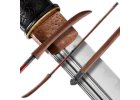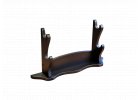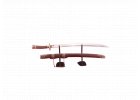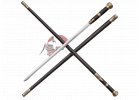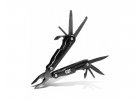The shirasaya (白鞘) is a traditional Japanese style of scabbard and hilt that was designed primarily for storing a blade, not for combat. Shirasaya literally means "white scabbard" and is characterized by its simplicity and elegance. It is usually made of unadorned, natural wood, often light magnolia wood, to ensure optimal protection of the blade from moisture and corrosion.
Shirasaya is often used for blades that are not intended for active use, but rather for long-term storage or collecting purposes. It is a minimalist style that has no tsuba (guard) or any distinctive embellishments, allowing the blade itself to stand out. Blades stored in the shirasaya style are therefore often of exceptional quality and preservation.
In addition to its functional value, the shirasaya has gained popularity as a decorative element and many collectors appreciate its aesthetics. This style also has symbolic meaning - it shows humility and respect for the blade, which needs no further decoration.
The shirasaya set, which was very similar in appearance to a wooden sword or a wooden pole, thus cleverly made it possible to carry a sword unnoticed.

_-_edited.png)




